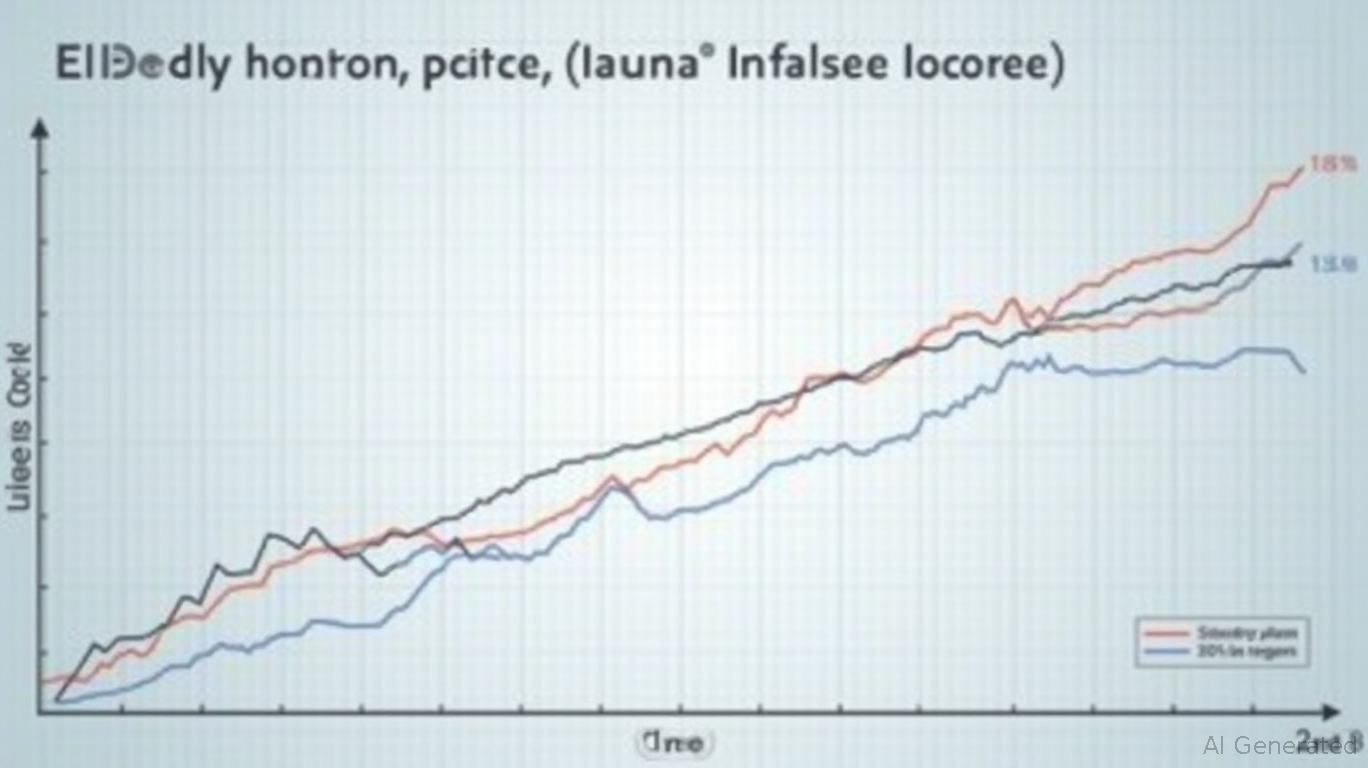Navigating the ECB's Inflation Path: Opportunities in European Equities
The European Central Bank (ECB) has signaled its confidence in stabilizing inflation at its 2% target by 2025, with recent projections showing a gradual return to the goal by 2027. This confidence, rooted in moderating wage growth, a stronger euro, and lower energy prices, has led to a 25 basis point rate cut in June 趁2025, marking a pivot toward prolonged accommodative monetary policy. For investors, this presents a critical moment to reassess sectoral exposures in European equities, particularly in rate-sensitive sectors like banks and cyclicals. Below, we dissect the implications and outline actionable investment strategies.
The ECB's Inflation Outlook and Policy Shifts
The ECB's latest inflation data reveals a cooling trajectory: headline inflation dipped to 1.9% in May 2025, with services and energy sectors leading the decline. Core inflation (excluding volatile food and energy) is projected to average 2.4% in 2025 before falling to 1.9% by 2027. This path assumes a gradual unwinding of temporary factors like Easter-driven travel costs and sustained wage moderation.

ECB President Christine Lagarde emphasized a “data-dependent” approach, avoiding pre-committed rate hikes. This signals that policy normalization will be slow, even as inflation approaches target. The June rate cut reflects a recognition that near-term risks—geopolitical tensions, trade uncertainties—favor maintaining liquidity.
Sectoral Impact: Winners and Losers in an Accommodative Regime
1. Banks: Navigating Thinner Margins with Caution
Banks face headwinds as lower interest rates compress net interest margins (NIMs). The ECB's rate cuts reduce the spread between lending and deposit rates, squeezing profitability. For instance, a 25-bp cut reduces average NIMs by ~5-10 basis points for major banks like Santander (SAN.MC) or Deutsche Bank (DBKGn.DE).
However, a stable economy and resilient loan demand (driven by low borrowing costs) could offset margin pressures. Banks with diversified revenue streams (e.g., wealth management, fees) or exposure to non-European markets may outperform.
2. Cyclicals: Primed for Growth in a Stable Inflation Environment
Cyclical sectors—consumer discretionary, industrials, and materials—benefit from both accommodative monetary policy and stable inflation. Lower financing costs spur consumer spending and corporate capex, while the absence of inflationary volatility reduces pricing risks.
- Consumer Discretionary: Companies like LVMH (MC.PA) or Inditex (ITX.MC) thrive in environments of moderate inflation and rising real incomes.
- Industrials: Sectors like machinery (e.g., Renault (RENA.PA)) or logistics (e.g., DHL (DHLGn.DE)) gain from infrastructure spending and global trade normalization.
3. Defensive Sectors: Underwhelming but Defensive
Utilities and healthcare, traditionally seen as safe havens, may underperform in a stable inflation scenario. Their low beta makes them less attractive when risk appetite is high. However, companies with dividend stability (e.g., Unilever (ULVR.L)) or innovation-driven growth (e.g., Roche (ROG.S)) could offer ballast during market volatility.
Investment Recommendations
Overweight Cyclicals:
- Consumer Discretionary: Target companies with exposure to luxury goods and travel recovery.
- Industrials: Focus on firms benefiting from EU infrastructure spending and green energy transitions.
Underweight Banks:
- Avoid pure-play European banks unless they exhibit strong fee income or geographic diversification.
Consider Sector-Specific ETFs:
- iShares MSCI EMU Financials (FEZG): For selective exposure to European banks.
- SPDR S&P Europe 350 Consumer Discretionary (DIS.EU): Captures cyclical consumer trends.
Hedging Risks:
- Allocate 5-10% to defensive healthcare or utilities to mitigate geopolitical risks.
Risks to the Outlook
- Geopolitical Volatility: Escalating trade tensions or energy supply disruptions could reignite inflationary pressures.
- Wage Growth Resurgence: If services inflation rebounds due to wage-price spirals, the ECB may need to tighten sooner than expected.
Conclusion
The ECB's confidence in stabilizing inflation at 2% signals prolonged accommodative policy, favoring cyclicals over rate-sensitive banks. Investors should overweight sectors benefiting from low rates and steady growth while maintaining a defensive buffer. As Lagarde's data-driven approach unfolds, European equities present a nuanced landscape—requiring sector-specific discernment to capitalize on the ECB's cautious pivot.
Stay positioned for cyclical resilience, and monitor ECB communications for clues on the timing of policy normalization. The path to 2% is clear, but the journey may hold surprises.

Comments
No comments yet